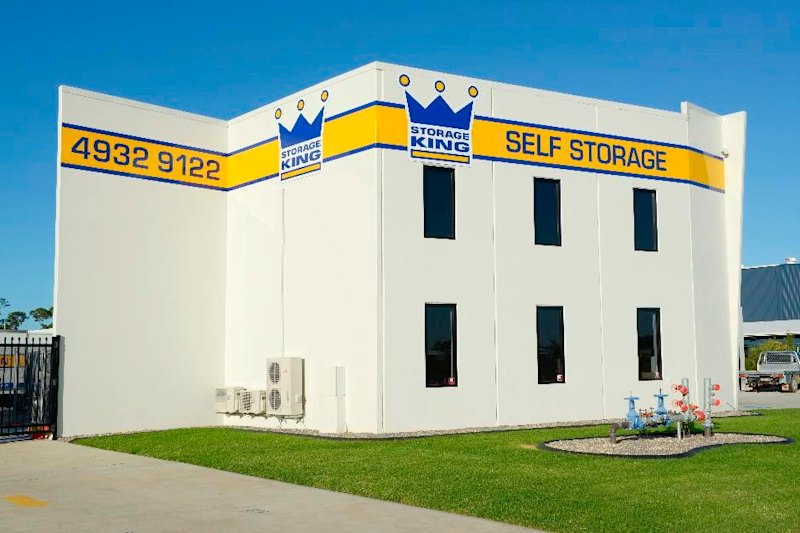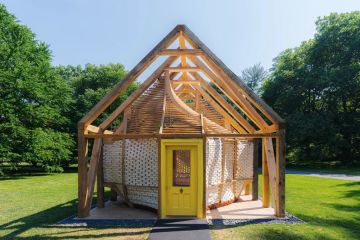‘It’s over’: Australia’s house price growth slows to a 12-month low
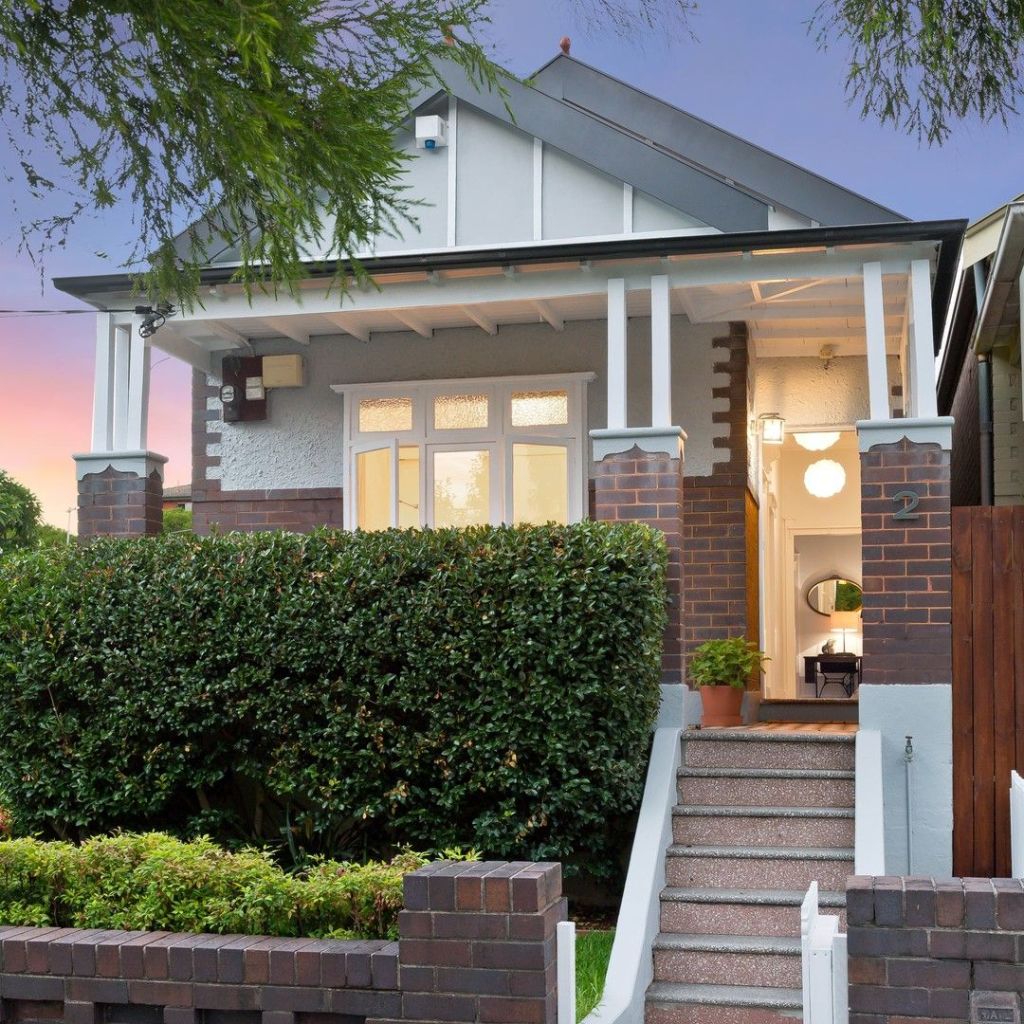
Australia’s extraordinary run of house price growth has finally come to an end in all but a couple of cities, with the latest data revealing a patchwork of property markets slowing across the nation.
House prices fell in Melbourne, Canberra and Darwin over the March quarter, according to the latest Domain House Price Report, released Thursday, while Sydney’s once skyrocketing price growth has now stalled and flatlined.
Brisbane, Adelaide, Perth and Hobart all continued to rise over the first three months of 2022, each chalking up record median house prices, however the rate of growth in Perth and Hobart has slowed to levels not seen since 2020.
Nationally, house prices have reached a record-breaking high of nearly $1.07 million.
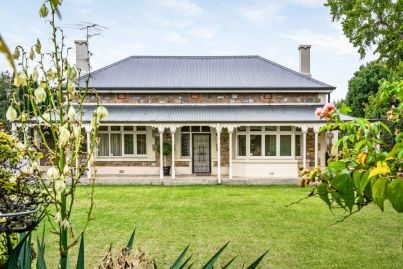

Despite this, it is the weakest quarterly outcome since prices declined in the June quarter of 2020. This has slowed the annual growth rate to a 12-month low, the report found.
Brisbane and Adelaide are the only cities to have hit record high unit prices, while Sydney, Melbourne and Hobart units fell from the record highs achieved in the previous quarter. This is the first time unit prices have declined in Sydney and Melbourne since mid-2020.
| Capital City | Mar-22 | Dec-21 | Mar-21 | Quarterly change | Annual change |
| Sydney | $1,590,932 | $1,588,423 | $1,314,383 | 0.2% | 21.0% |
| Melbourne | $1,092,144 | $1,099,419 | $981,401 | -0.7% | 11.3% |
| Brisbane | $831,346 | $806,117 | $629,499 | 3.1% | 32.1% |
| Adelaide | $750,084 | $728,342 | $585,384 | 3.0% | 28.1% |
| Canberra | $1,124,952 | $1,134,678 | $929,201 | -0.9% | 21.1% |
| Perth | $622,030 | $612,926 | $592,537 | 1.5% | 5.0% |
| Hobart | $758,141 | $727,099 | $604,103 | 4.3% | 25.5% |
| Darwin | $635,389 | $647,156 | $543,246 | -1.8% | 17.0% |
| Combined capitals | $1,069,289 | $1,062,537 | $902,829 | 0.6% | 18.4% |
Brisbane is now Australia’s strongest property market. Prices in the Sunshine State capital have risen by a massive $200,000 in the space of just 12 months – that’s $553 a day – to a record median price of $831,346. Unit prices have also hit a record high of $437,034, making it the fastest-growing unit market this year.
Ray White Paddington agent Judi O’Dea said Brisbane’s market stalled following the February floods but recent weeks had seen demand from buyers reignited to levels akin to last year’s frenzied conditions.
“Before Easter, it was quite a lot flatter and the floods were certainly a factor – people were in shock. The market paused for a couple of weeks,” she said.
| SA3 region | Median price | Quarterly change | Annual change |
| Holland Park – Yeronga | $1,285,000 | 7.1% | 40.8% |
| Carindale | $1,265,000 | 7.2% | 40.6% |
| Brisbane Inner – East | $1,500,000 | 4.5% | 39.5% |
| Kenmore – Brookfield – Moggill | $1,230,000 | 11.3% | 39.1% |
| Nathan | $1,050,000 | 8.8% | 38.8% |
| Redcliffe | $770,000 | 10.8% | 38.7% |
| Mt Gravatt | $1,050,000 | 8.5% | 38.0% |
| Bald Hills – Everton Park | $920,000 | 12.2% | 36.3% |
| Nundah | $883,000 | 7.4% | 35.8% |
| Capalaba | $797,500 | 7.0% | 35.7% |
“But in recent weeks the quality calls, the number of calls, the inquiry – it’s back on. I think the Brisbane market has still got a lot left in it. There’s so much happening in this city.”
House prices in Adelaide hit a record $750,084, the steepest annual house price upswing ever to be recorded for the city, at 28.1 per cent, adding $165,000 to the median cost of a house.
Unit prices reached a record high of $376,977.
But elsewhere, even in the capital cities where prices have risen like Hobart and Perth, momentum is slowing. Quarterly growth across the combined capitals is 10 times slower this quarter than the December quarter.
Even in Canberra – which last year recorded the steepest ever upswing in its median house price, catapulting it into the position of Australia’s second-most expensive property market – the boom has come to an abrupt halt.
Weaknesses in the country’s most expensive property markets began to emerge as early as late last year.
Over the first three months of 2022, the signs were there for a slow down in cities like Sydney and Melbourne. There was the threat of interest rate rises, there was price rise fatigue, and very quickly the balance of supply and demand shifted in favour of buyers.
Auction clearance rates fell from 80 per cent-plus to 60 to 65 per cent, indicating a more balanced market.
| Capital City | Mar-22 | Dec-21 | Mar-21 | Quarterly change | Annual change |
| Sydney | $796,524 | $806,302 | $759,957 | -1.2% | 4.8% |
| Melbourne | $578,775 | $591,842 | $570,096 | -2.2% | 1.5% |
| Brisbane | $437,034 | $423,791 | $399,735 | 3.1% | 9.3% |
| Adelaide | $376,977 | $372,016 | $343,331 | 1.3% | 9.8% |
| Canberra | $564,984 | $561,624 | $518,818 | 0.6% | 8.9% |
| Perth | $358,366 | $369,834 | $375,820 | -3.1% | -4.6% |
| Hobart | $572,568 | $585,856 | $441,149 | -2.3% | 29.8% |
| Darwin | $385,728 | $387,530 | $297,241 | -0.5% | 29.8% |
| Combined capitals | $616,942 | $623,375 | $590,444 | -1.0% | 4.5% |
“What we’ve got now is a multi-speed market across the capital cities,” said Nicola Powell, chief of research and economics for Domain. “We’re seeing a greater loss of momentum in our biggest cities, but also a loss in our other capital cities to a lesser degree.”
She said Australia was moving into the next stage of the property cycle, which created more stable – and more favourable – conditions for buyers.
“The key thing in a housing market cycle is when you see overall supply rise. It means new listings are coming to the market quicker than they’re being sold and it takes away some of that momentum, that frenzied nature and the FOMO we saw during the pandemic.”
Frenzy is no overstatement. To put it into perspective, Domain’s report found that at this time last year, prices in Sydney were rising at 46 times the pace than they are growing now.

“This is going to give buyers some time. That’s what buyers haven’t had for the past year or so and time is so important when you’re making a huge financial decision,” Dr Powell said.
“In markets like Sydney, Melbourne and Canberra, wage growth is actually surpassing house price growth for the first time in a while.”
The easing of prices comes as a relief to Sydney first-home buyer Marty Newkirk, who sat on the sidelines of the property market last year watching on in disbelief.
“We were looking last year but really, given the conditions, we were on the outer. We weren’t really in a position to look in earnest,” he said.
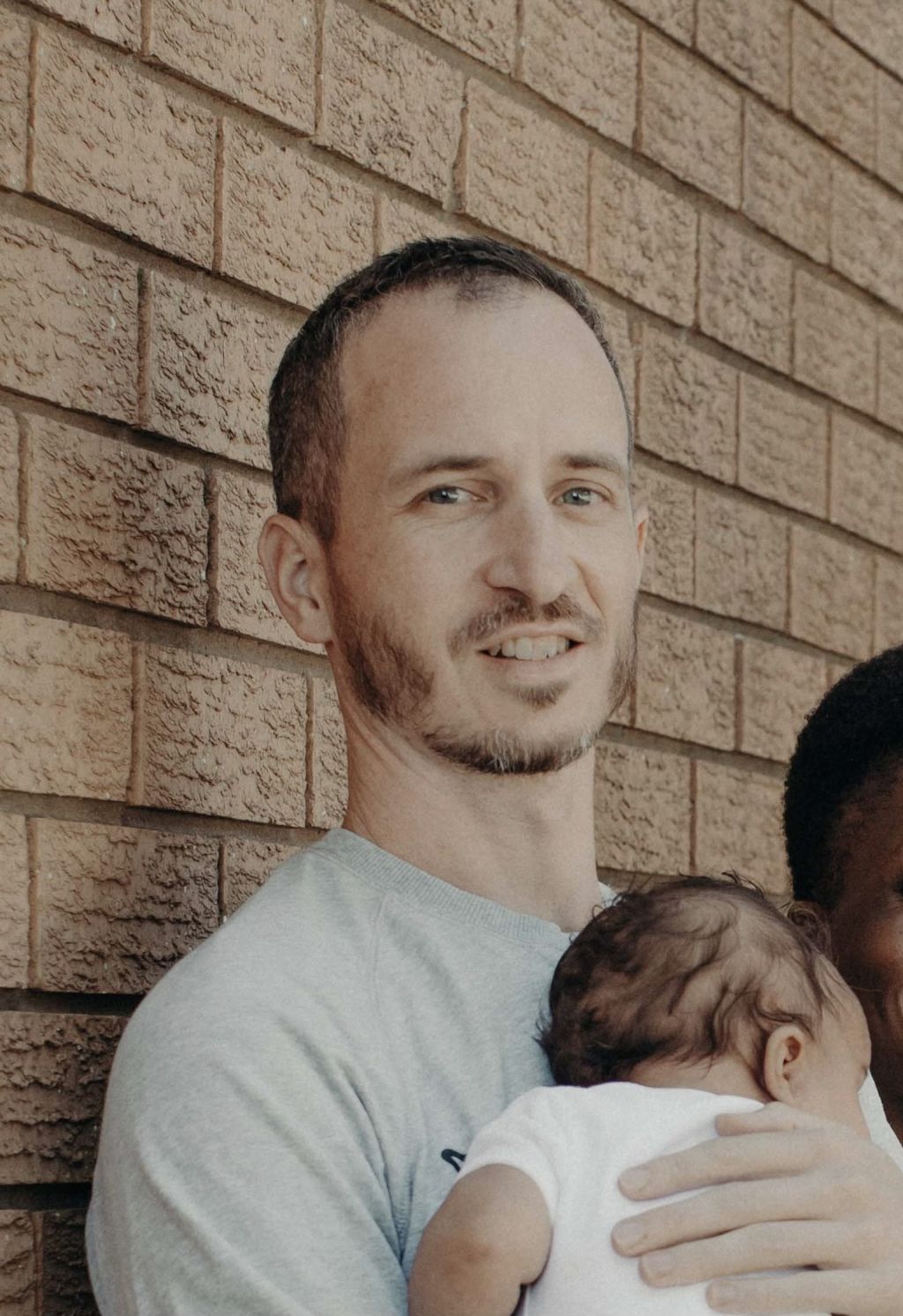
“That’s changed now. We’re looking more seriously because we’ve got that sense that things are slowing down a bit and I think we might be coming into a buyers market over the next six months.”
That shift in the market means the 38-year-old, who rents in Dulwich Hill with his wife and two daycare-aged children, no longer feels pressured to buy immediately.
“Just recently we passed up a house that we were pretty interested in because we felt that we could now probably get something very similar, but for cheaper,” he said.
“It felt like the vendors were still hanging on to the end of the bull market, so we walked away. That’s a big change. We might have pulled the trigger on that one if we thought the market was still going up.”
He acknowledged that despite a slow down in the market, prices were still extraordinarily high.
“Oh, definitely. Prices are still so expensive. I feel really fortunate that we are potentially now in position to buy our first place in what is hopefully going to be a buyers’ market but because we’re factoring in potential interest rate hikes, we’re basically still in a position where we can’t find anything that we’re happy with in our budget.”
Dean Berman is Mr Newkirk’s buyer’s agent and specialises in acting for first-home buyers across the country.
He said any slowdown in the property market would be a “welcome reprieve” for those trying to get on the property ladder.
“A market that might be stagnating or declining will certainly benefit first-home buyers after the way the market has been the past 12 months particularly,” Mr Berman said.
“The initial cost of a deposit and stamp duty is always an issue for first-home buyers but so is their borrowing capacity – having incomes sufficiently high enough to get a loan is also often an issue. Some young people can take five to 10 years to be earning enough to borrow in their market.
“From what I’ve seen dealing with first-home buyers, we haven’t really seen any dramatic drops yet, just that the sentiment has changed a bit … buyers feel like it’s now easier to get a deal over the line.”
| SA3 region | Mar-22 | Dec-21 | Mar-21 | Quarterly change | Annual change |
| Brighton | $500,000 | $430,000 | $375,000 | 16.3% | 33.3% |
| Hobart – North East | $761,000 | $700,000 | $595,000 | 8.7% | 27.9% |
| Hobart – North West | $600,000 | $565,000 | $455,000 | 6.2% | 31.9% |
| Hobart – South and West | $820,300 | $770,000 | $650,000 | 6.5% | 26.2% |
| Hobart Inner | $1,047,500 | $1,042,000 | $830,000 | 0.5% | 26.2% |
| Sorell – Dodges Ferry | $657,000 | $596,000 | $483,000 | 10.2% | 36.0% |
Buyer’s agent and director of PK Property Peter Kelaher said the pandemic property boom had been an unrealistic and unsustainable situation.
“It was the biggest property boom in 40 years. It’s over. What we’ll enter into now is a fairly flat sort of market for the next couple of years that looks more like the 2018/2019 market,” he said.
“Some vendors still want 2021 prices and the market is just not paying that. They have to go through reality checks, which really won’t come until June or July I think, with the federal election, an interest rise, and just time in general. Spring will be quiet too.”
But Mr Kelaher said property watchers waiting for massive price drops would be disappointed.
“A-grade and B-grade property is still selling well. You’ve got to look at a property that you’re got to be in for seven years-plus. If you find something you really really like, if all the stars are aligned, you’re best off just buying and not paying rent,” he said.
“If you really think the market is going to drop those huge amounts, it won’t. People just don’t sell and you get a Mexican stand-off.”
Data released by the ABS on Wednesday showed annual inflation has risen to its highest level in more than 20 years, which Gareth Aird of the Commonwealth Bank said presented a “clear risk” of the RBA raising interest rates at the next board meeting in May.
The looming threat of rate rises was causing some Melbourne buyers to sit on their hands already, said Jenny Gao of Harcourts Judd White in the outer east.
“They’re holding out because they think prices are going to drop,” she said.
| SA3 region | Mar-22 | Quarterly change | Annual change |
| Mornington Peninsula | $1,250,000 | 5.0% | 28.9% |
| Kingston | $1,250,000 | -0.5% | 25.0% |
| Hobsons Bay | $1,090,000 | -0.9% | 23.9% |
| Macedon Ranges | $1,052,500 | 7.1% | 23.1% |
| Nillumbik – Kinglake | $1,215,000 | 0.0% | 21.5% |
| Banyule | $1,075,000 | 0.0% | 18.7% |
| Knox | $975,500 | 1.8% | 18.6% |
| Manningham – West | $1,500,000 | 1.3% | 18.1% |
| Maribyrnong | $1,050,000 | 2.4% | 18.0% |
| Whitehorse – East | $1,280,000 | -0.1% | 17.9% |
“Because of interest rates going up, buyers think prices will eventually come down. I see it as an opportunity because the Glen Waverley and Monash areas are in high demand. If you just keep looking you’ll never get in the market.”
Every Melbourne region except the inner east and west recorded house price falls over the March quarter, which Ray White Victoria and Tasmania chief executive Stephen Dullens said spoke to the city’s varied property market.
“Patchwork is a good term to use for it,” he said. “Last month some offices were getting auction clearance rates of 100 per cent. Other offices were getting no bidders at all.
“Quality stock is still going really well but I think with the heat coming out of the market, it’s now a lot more balanced between buyers and sellers. The key theme is that there is more stock.
“Melbourne’s market now has a lot more nuance to it and buyers are pickier.”
In Sydney, it’s the premium suburbs leading the price falls, including the eastern suburbs, inner city and south and northern beaches, as well as Parramatta, Ryde and Sutherland.
Dr Powell said sellers would have to get more realistic quickly as the rate of quarterly growth weakened.
| SA3 region | Mar-22 | Quarterly change | Annual change |
| Eastern Suburbs – North | $4,275,500 | -2.8% | 12.5% |
| Auburn | $1,150,000 | -2.5% | 18.6% |
| Kogarah – Rockdale | $1,650,000 | -1.8% | 23.6% |
| Eastern Suburbs – South | $3,111,000 | -1.2% | 30.2% |
| Pennant Hills – Epping | $2,205,000 | -0.9% | 21.1% |
| Botany | $1,850,000 | -0.3% | 22.0% |
| Warringah | $2,610,000 | -0.1% | 29.3% |
| Strathfield – Burwood – Ashfield | $2,202,000 | 0.1% | 19.7% |
| Sutherland – Menai – Heathcote | $1,500,000 | 0.3% | 29.9% |
“The auction market is a shining example of the shifting conditions. It was the busiest March quarter on record but clearance rates have dropped to 65 per cent compared to the 81 per cent outcome for the same time last year,” she said.
“This changing balance is slowly rippling across Sydney and sellers are having to be more realistic with pricing … cautious buyers are armed with greater choice.”
Dr Powell said the turn in the market presented opportunities for buyers who struggled to keep up with the pace of growth last year.
“The craziness has left the market. What these conditions do is take away that element of fear, that ‘I have to purchase right now’ feeling,” she said.
But prices would have to fall by a long way to make a substantial difference to housing affordability, she noted.
“We would need to see some substantial falls for prices to go back to what they were prior to the pandemic. Sydney has seen a 37 per cent increase since March 2020. Brisbane is up 40 per cent, Canberra, 46 per cent and Hobart 45 per cent,” she said.
We recommend
We thought you might like
States
Capital Cities
Capital Cities - Rentals
Popular Areas
Allhomes
More




